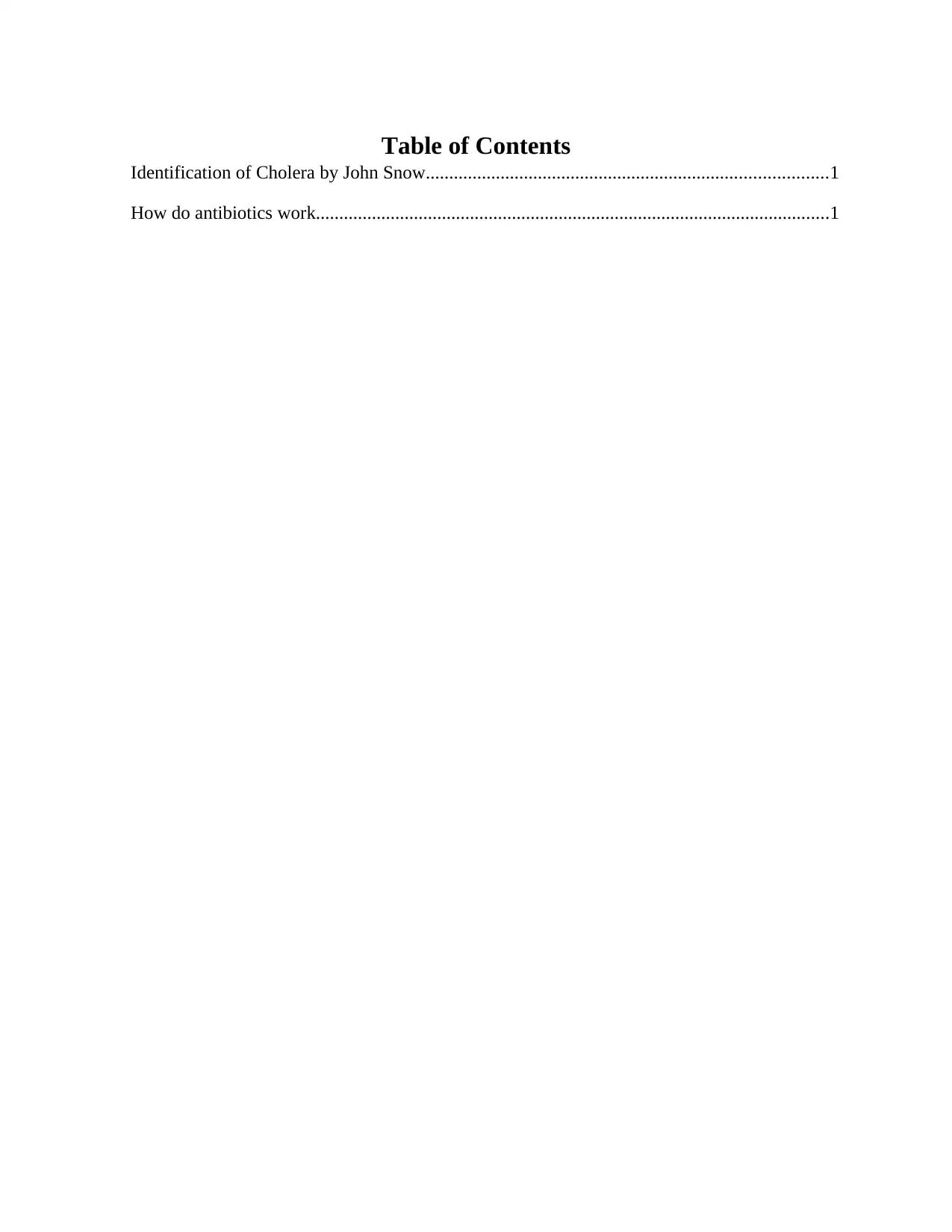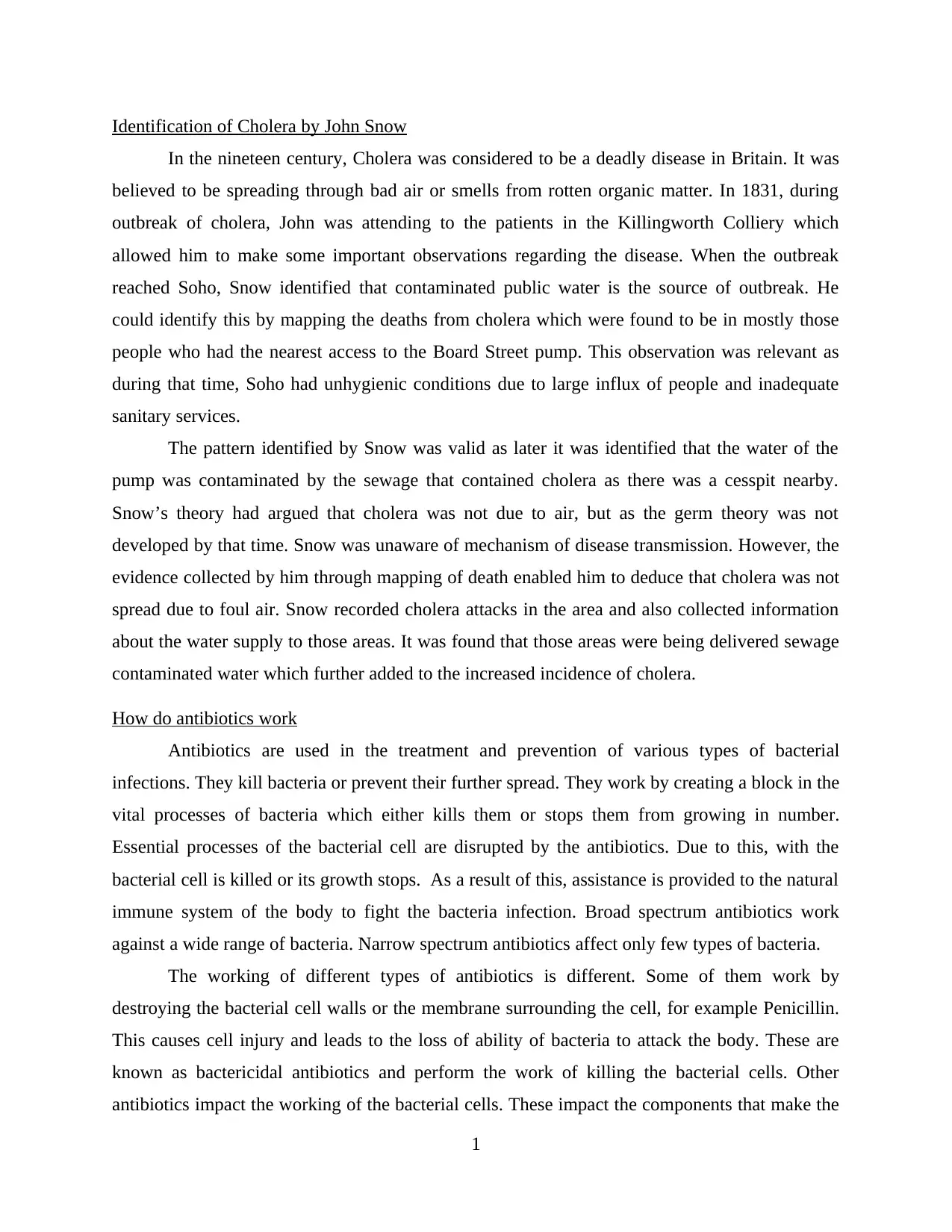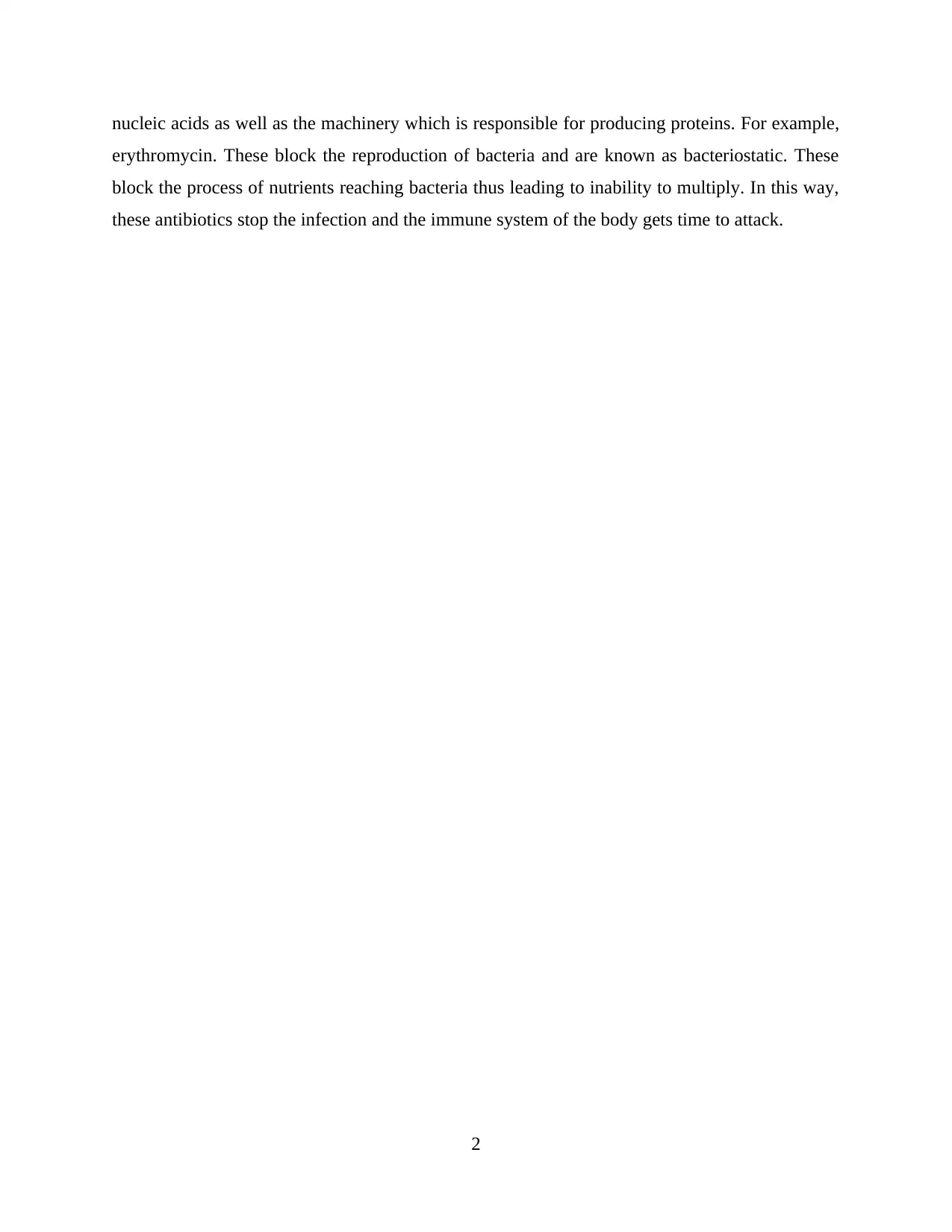John Snow's Cholera Identification & Antibiotics Mechanism of Action
VerifiedAdded on 2023/06/09
|4
|567
|109
Homework Assignment
AI Summary
This assignment explores John Snow's identification of cholera transmission in 19th-century Britain, focusing on his mapping of deaths to contaminated water sources, which disproved the miasma theory. It also details how antibiotics combat bacterial infections by disrupting vital processes, either killing bacteria (bactericidal) or inhibiting their growth (bacteriostatic). The assignment differentiates between broad and narrow-spectrum antibiotics, explaining mechanisms like cell wall disruption (e.g., penicillin) and interference with protein synthesis (e.g., erythromycin), ultimately aiding the body's immune response. Desklib offers further study resources and solved assignments for students.
1 out of 4








![[object Object]](/_next/static/media/star-bottom.7253800d.svg)